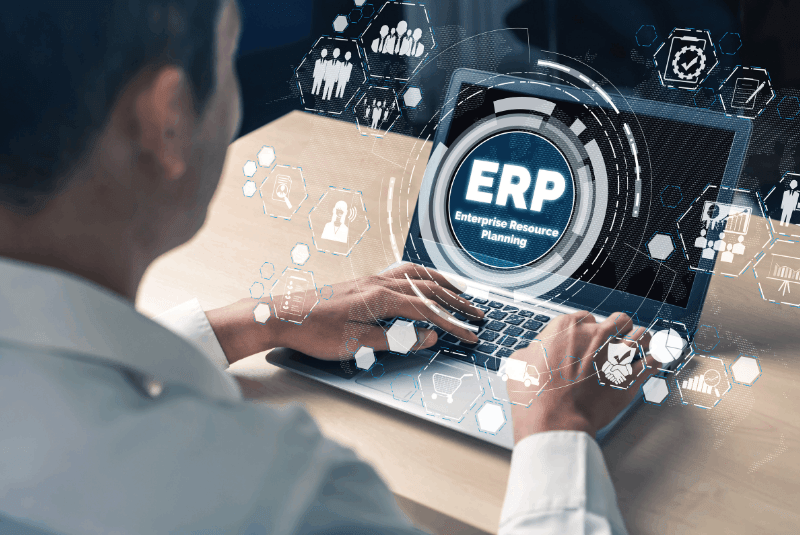Choosing the right ERP vendors can be a big undertaking, but it is an investment that will pay off in the long run. ERPs are more than just one solution for your business – they’re a way of life. ERPs provide you with information to make better decisions and streamline processes so you can focus on growing your business.
Here are ten best practices for defining your needs and simplifying the decision-making process. Determine which ERP package is right for you and your business by selecting the best one:
1. Know what your company needs are and write them down.
There will be several significant distinctions between ERP solutions when you’re looking for one. Some of these features will be ‘nice to haves’ rather than ‘must havers’ depending on your company’s objectives..’ All stakeholders should describe and document their key business needs and goals. Beginning with a clear list of requirements and capabilities will assist you in generating a viable shortlist, eliminating options that don’t fulfill your needs.
2. Align the capabilities of your ERP vendors with your needs.
If you’re using document control software for accounting like Docupile, you should consider upgrading to a more advanced solution., You probably created workarounds to make them function for you. The top priority in your research should be ensuring that your ERP vendors has the prior industry expertise and knowledge of your particular needs. Are they familiar with operations that are comparable to yours?
3. Make sure management and stakeholders are on board.
It may be difficult to promote ERP solutions to your internal staff. To generate enthusiasm for the cause, you’ll need all levels of management on board. Keeps communication lines open. It will be easier to prevent conflicts from emerging during the change-over if you are open and include your workforce in the process.
4. Treat your ERP transfer as a change management effort.
The most common blunders companies make when switching to an ERP system is failing to plan ahead. The first important reason for the failure of a new system is not ensuring that adequate infrastructure is in place before implementation. The success of your ERP will have a wide range of effects on your company, from sales to finance to service. Make sure you devote the appropriate.
5. Select a lead member or leader of the project.
A body with no head has a limited range of movement. The project’s sponsor is in charge of informing all workers at all levels about the project’s status and how it affects the company. What can the team anticipate? What are the project’s milestones? When will the system be live and operational? These are all questions the project’s supervisor should be able to answer.
6. Check to see whether your accounting software has any training or support options.
You will have a daily relationship with your solution provider that entails training and support. Ensure that they can give you the ongoing help you require not just to implement your ERP solution but also to maintain it and enhance your operations. Inquire about ongoing training, webinars, technological documentation, industry conferences, customer service, and account manager accessibility.
7. When it comes to internal resources, don’t be cheap.
Having the proper internal resources will assist you in establishing reasonable ERP goals, protecting essential business processes, preventing chaos, and reducing project creep. ERP is not a ‘set it and forget it’s software; it’s a powerful business tool that you use to oversee your entire business. To take advantage of the Advantages of ERP and get the most return on your investment, you’ll need the appropriate individuals in the proper jobs.
8. Keep tabs on the data transfer as soon after the start of the project as possible.
The more places you keep crucial business data, the more organized you must be when considering integrating your systems. You should create a data migration approach, document your policy, and clearly communicate it to relevant people as a standard procedure. You should include strategies for dealing with open invoices, accounts payable, open purchase orders, and accounts receivable in your budget.
9. Find out what other consumers have to say about your business.
It’s often tempting to go straight to the source for information about an ERP system. Seek testimonials and customer case studies from ERP vendors to learn more about the value they can provide. Read customer success stories to learn how ERP has benefited other businesses and perhaps offer you some ideas about how to implement the technology in your own company.
10. Calculate your return on investment
Many of the most horrendous ERP statistics have to do with ROI. Many companies are unaware of the advantages and cost savings of their system because they did not have clear expectations from the start. Calculate how much you’ll spend on this switch from one ERP provider to another, as well as the business advantages that each could provide. This will help you better understand why things happen the way they do the overall picture, but it also supplies the information your head leadership team needs to make things easier for them.




